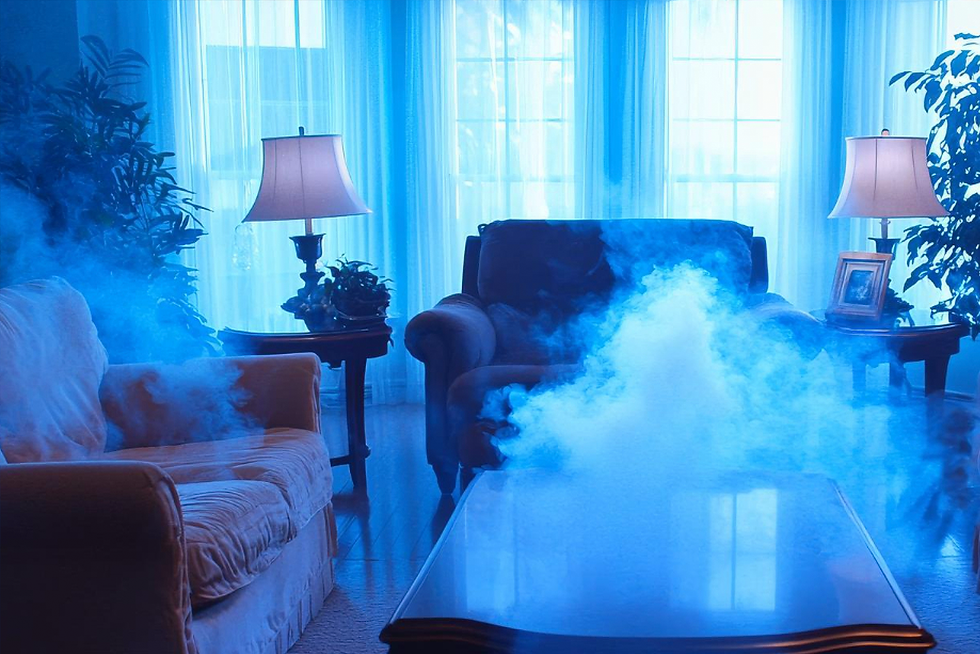Toxic schools: Could mold be the reason your child is sick?
- Corey Provencal

- Oct 21, 2010
- 3 min read
By Denise-Marie Balona, Orlando Sentinel
Six-year-old Anthony Aliseo was miserable. He had headaches, pressure between his eyes, trouble breathing and, occasionally, suffered the indignity of vomiting in front of his classmates.
Over two years, the youngster was in and out of the doctor’s office for constant sinus and respiratory infections. Cara Aliseo watched her son endure 70-plus allergy injections, two CAT scans and then two surgeries to drain his clogged sinuses.
She could not figure out what was causing the boy to be so sick — until another mom at his elementary school mentioned the campus was being treated for mold.
Once she moved Anthony to another school, she said, his health problems vanished.
Aliseo and several other parents sued the Broward County school district, and she settled out of court in 2007.
Despite growing legal claims across the country involving indoor air quality, there is also no generally accepted standard for how much mold can be in a room before it becomes unsafe. That’s because sensitivity levels can vary widely from person to person.
If mold is growing on the ceiling or inside the wall of a classroom, some kids will not be affected at all. Others, however, might experience flu-like symptoms such as runny noses, coughing and breathing difficulties.
Some types of mold emit toxins that can elicit more severe responses.
For example, Aspergillus and Stachybotrys, which have forced the closure of homes and schools across the country, have been linked to lung and respiratory infections. Children are especially vulnerable, health experts say, because their organs are still developing and they take in more air relative to their body size than adults.
Because it is hard to predict how any one person will react, the U.S. Centers for Disease Control and Prevention and U.S. Department of Environmental Protection suggest that all molds be treated the same and be removed immediately when found growing indoors.
But pediatricians and allergists urge parents not to panic if mold is discovered in schools. Instead, they said, parents should be asking questions about where the mold is located, how it got there and what school officials are doing to get rid of it.
“I don’t think they should be freaking out, but I think it’s definitely something they should be concerned about,” said Stephen Kimura, a Pensacola allergist who is immediate past president of the Florida Allergy, Asthma and Immunology Society.
He has seen a substantial increase in the number of children and teachers coming to him with symptoms they believe are related to mold in schools since Hurricane Ivan and then Hurricane Dennis ravaged the Florida Panhandle in 2004 and 2005.
Many schools were left with roof damage and water leaks, Kimura said.
“It’s a tough issue to remediate because mold is so pervasive,” he said. “Unless you strip the walls down to the studs and take out the insulation and redo that, you’re not going to completely get rid of it.”
Thanai Pongdee, an allergist with Mayo Clinic Florida in Jacksonville, also pointed out that children themselves bring allergens to school on their clothing. Schools may not realize they are harboring a variety of allergens in carpet, upholstered furniture, pillows and stuffed animals, Pongdee said.
“I know mold gets a lot of popular press,” he said, “but if you look at dust mites and animal dander, those are key players as well.”
Mold is a naturally occurring part of Florida’s warm, humid climate. Mold spores continually waft through the air indoors and outside.
What becomes problematic is when those spores come into contact with moisture – a roof leak, a liquid spill or high humidity, for example – and are allowed to multiply and form colonies inside buildings. Mold in classrooms can be especially concerning because these are small areas with limited air flow where children and school employees spend hours at a time.
If moms and dads think their kid’s’ school is making them sick, experts say they should keep a detailed log of children’s symptoms, including when they occur, and confer with their doctors.
Broward mom Cara Aliseo suggested parents educate themselves about mold and push officials to do any necessary repairs quickly and correctly.
Part of the problem at her son’s former school, she said, was that the mold clean-ups were not done the right way so mold kept coming back. In the end, most of the campus had to be rebuilt.
“I know if we didn’t fight the way we did — me and teachers and parents screaming and going to meetings and causing trouble — it never would have been fixed,” she said.
• John P. Lapotaire, CIEC • Certified Indoor Environmental Consultant • Microshield Environmental Services, LLC • www.Microshield-ES.com
#microshield #IESO #CETC #indoorairquality #HOA #FloridaMoldLaw #mold #moldpretreatment #Schoolmold #moldtesting #moldprevention #healthyhome #iaqa #condomold #moldinspection #moldremoval #moldremediation #johnlapotaire #ACAC #newhomemold #Apartmentmold #JohnPLapotaire #HouseBill713 #ciec #airquality









Comments